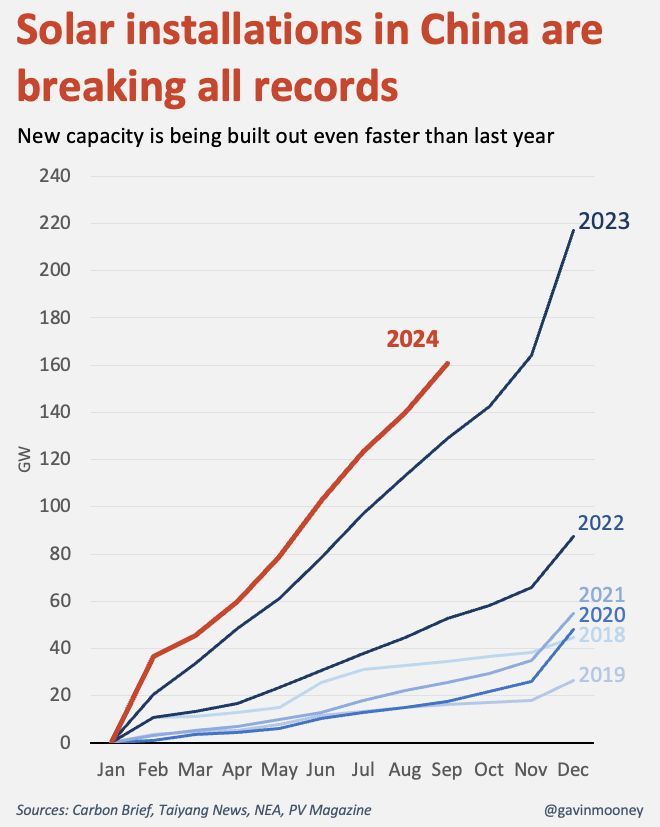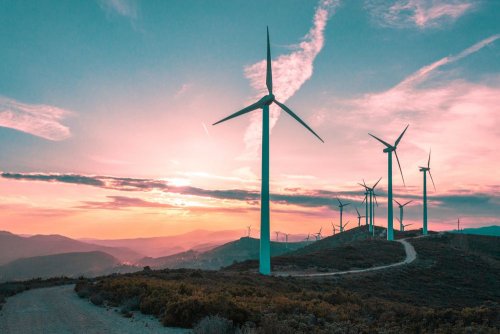Production of polysilicon, silicon wafers, cells and modules in China grew by more than 30% year-on-year. The export of photovoltaic modules increased by almost 20%.
Such data is provided by the China Photovoltaic Industry Association (CPIA), and it is also stated in the report "China's Energy Transition" published by the Information Office of the State Council of China.
According to it, in the first half of 2024, China's PV industry sector continued to grow. Analysts stated that new capacities are being built faster than last year:

Source: facebook.com/profile.php?id=100016886898719.
It is also claimed that the high conversion efficiency of crystalline silicon/perovskite in photovoltaic cells has broken several world records.
Data from the National Energy Administration of China show that about 102 GW of installed capacity was added in the first half of this year compared with the first half of 2023.
Which helped China accelerate the development of solar generation
In the past, China's PV industry has been highly dependent on foreign markets for raw materials and equipment.
In the first decade of the 21st century, battery production in China grew rapidly. The opening of the domestic market and the development of basic technologies helped to cope with the disastrous consequences of the global financial crisis of 2008-2009.
Driven by the dual carbon target, Chinese enterprises have stepped up battery production.
"In 2023, the world's top 10 battery enterprises were all Chinese enterprises with a total production capacity of 681.2 GW, accounting for 66% of the world's total production capacity," said Liu Yiyang, deputy secretary general of the China Photovoltaic Industry Association.
China is not going to give up its leadership
After more than 10 years of development, China's photovoltaic industry has become a leading force in the global energy transition. By data According to the International Energy Agency (IEA), in 2023 the installed capacity of renewable energy sources (RES) in China exceeded the capacity of the rest of the world combined.
Over the last decade, the average cost per kWh in photovoltaic projects has decreased by more than 80%. According to the IEA's Renewable Energy 2024 report, this decline is largely due to China's efforts.
China is expected to account for nearly 60% of all renewable energy capacity installed in the world between now and 2030, the report said.
The authors of the report "China's Energy Transition" provide the following forecast figures for the country in 2050:
- China's energy balance will change from 30% RES today to 88% by 2050.
- Solar energy accounts for 5% of China's electricity generation today – a share that will rise to 38% by 2050.
- Oil consumption will only halve by 2050 from its 2027 peak, while natural gas consumption will peak in the 2030s and then return to today's levels by mid-century.
- China will continue to strengthen its position as a world leader in the field of green energy through the development and export of renewable energy technologies.
In May, EcoPolitic reported that the US has increased dramatically duty on Chinese solar panels. We also informed that China for a two-year period has surplus of carbon quotas.





